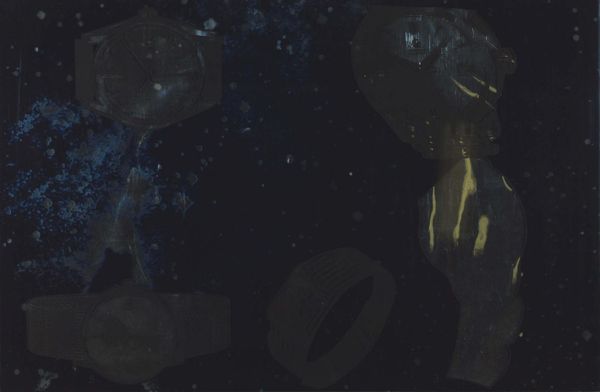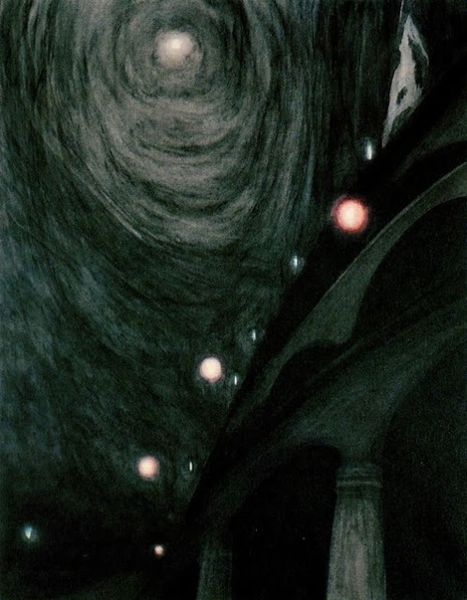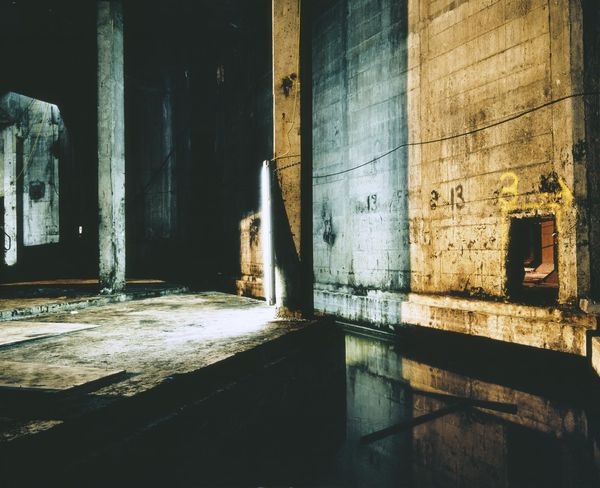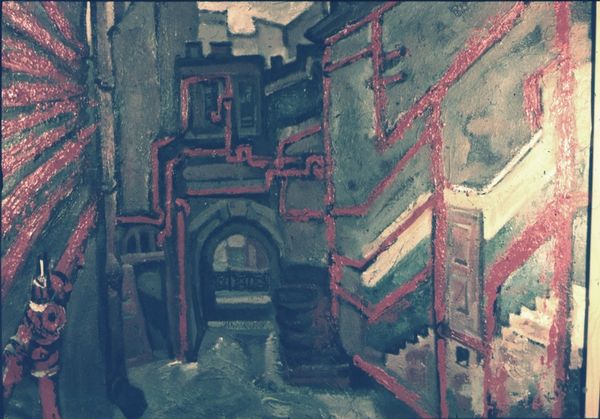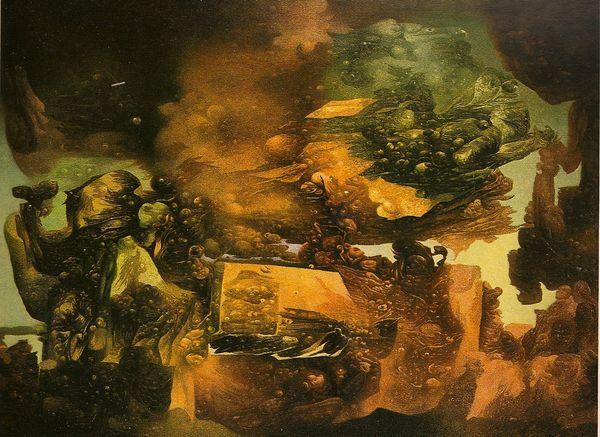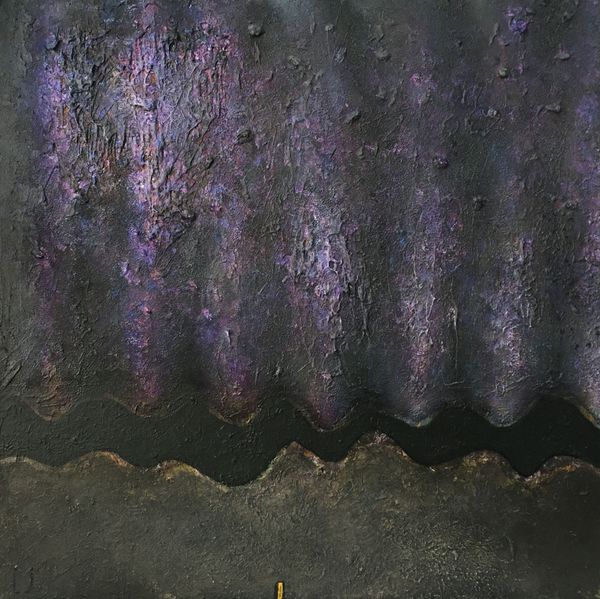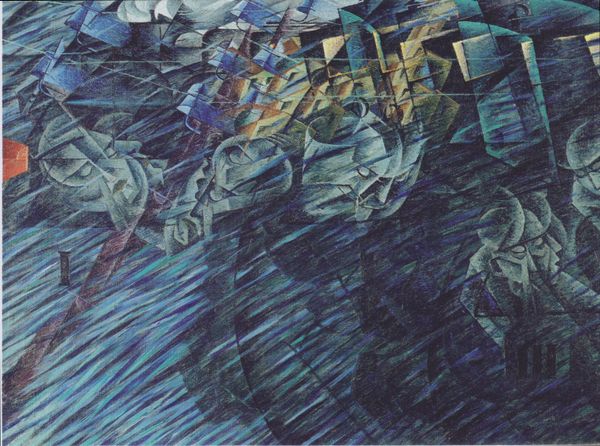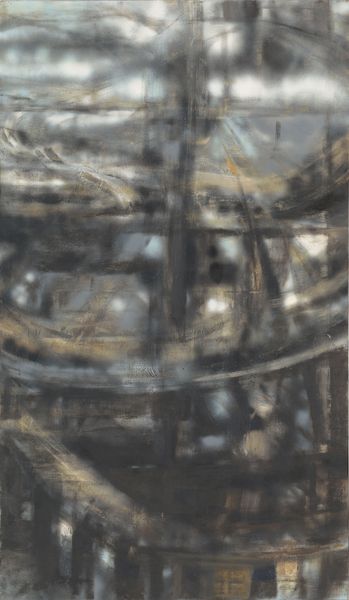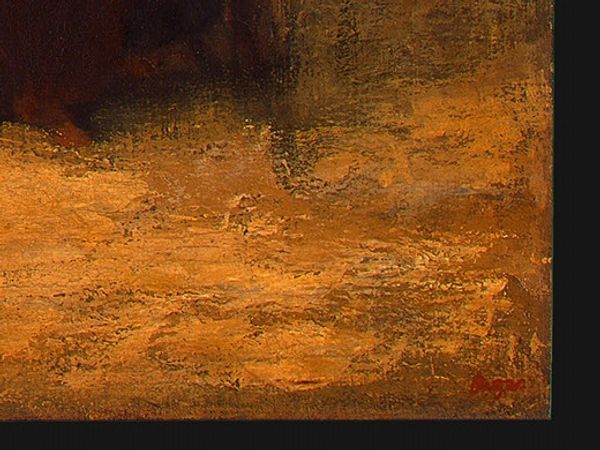
Dimensions: support: 1500 x 2420 mm
Copyright: © Rut Blees Luxemburg | CC-BY-NC-ND 4.0 DEED, Photo: Tate
Curator: Rut Blees Luxemburg's large-scale photograph, "Viewing the Open," captures a seemingly mundane urban scene—a rain-soaked street at night, measuring about 1.5 by 2.4 meters. Editor: It's captivatingly bleak, isn't it? A kind of sublime urban decay. The reflective surfaces draw my eye, making me think about the hidden narratives etched into the surfaces we often overlook. Curator: Indeed. Water is, of course, deeply symbolic, often tied to subconscious and the ebb and flow of life—but here, it seems almost stagnant, reflecting a distorted reality. Editor: The very title proposes an opening, perhaps suggesting the potential for transformation within these neglected spaces, a subtle critique of urban planning and social disparity. It asks, "Who gets to have an open view?" Curator: Yes! And the reflections of artificial lights play into that; they feel ominous, like beacons in a landscape that should be offering rest. It has echoes of film noir. Editor: I agree, the golden, almost sickly light evokes a sense of unease, perhaps reflecting the precarity faced by marginalized communities in these urban landscapes. Curator: The image powerfully captures the melancholic beauty found even in the most overlooked corners of our cities. Editor: It pushes us to reconsider the politics of space and the stories embedded within seemingly empty vistas.
Comments
tate 7 months ago
⋮
http://www.tate.org.uk/art/artworks/blees-luxemburg-viewing-the-open-p78570
Join the conversation
Join millions of artists and users on Artera today and experience the ultimate creative platform.
tate 7 months ago
⋮
Viewing the Open is a large colour photograph mounted on aluminium. It was taken at night with a large format camera and long exposure. It is an image of a large, empty yard surrounded by buildings. A small portacabin in the upper right corner indicates that it may be the site of building works or used as a car park during the day. The surface of the yard fills most of the picture. At the top of the image, two ramps lead up and out of the frame. Between them, the yard surface ends abruptly at a column-studded brick wall. Further sections of brick wall jut into the yard at the upper edges of the image. The scene is illuminated by the sulphurous yellow and orange tones of city night lights. These confer a sensual beauty on the rich texture of the yard’s otherwise unremarkable surface. Segments of cracked concrete, shining yellow in the foreground, emerge from darker areas of pock-marked tarmac. Puddles of water are sinister black or reflect the light shining from buildings not visible within the frame of the photograph in patches of white edged with a lime green glow. Fragments of dark grids in these reflections indicate the structure of the surrounding buildings. Blees Luxemburg has transformed a scene of urban decay into an abstract study of colour and texture through the use of light, a subject traditionally central to photography. The forces of nature, manifest through the water that fills the potholes, and other forces of decay (such as time) combine with synthetic lights to produce a seductive, if surreal, aesthetic. On the earthy bank of one of the ramps, an abandoned traffic cone points up from among the weeds. This incongruous reminder of everyday reality increases the uncanny atmosphere of the image.
